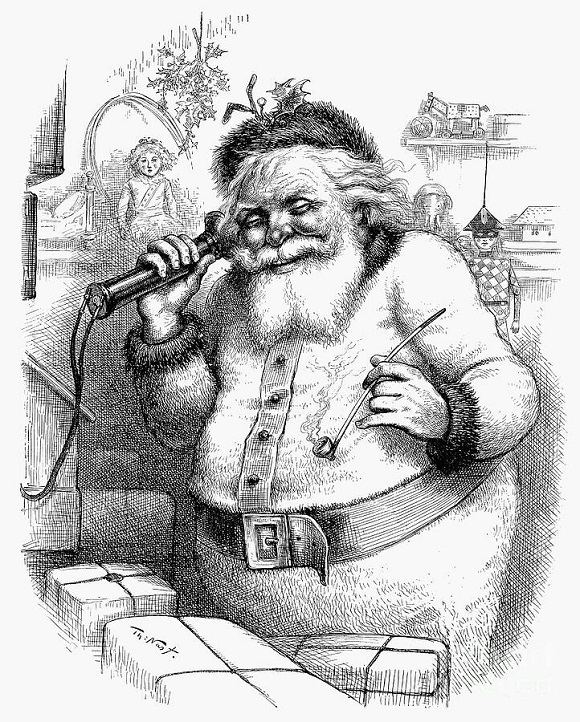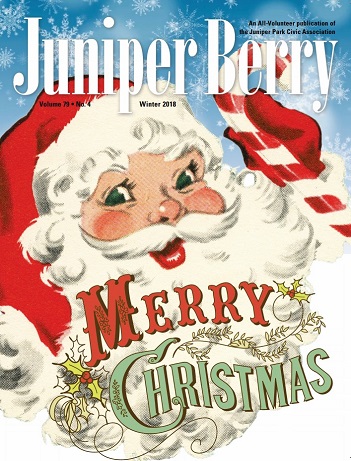In 1823, Clement Clarke Moore’s poem “A Visit from St. Nicholas” alternately known as “Twas Night Before Christmas” brought the idea of Santa Claus into mainstream culture.
Moore was born on a large Manhattan estate called Chelsea (which lent its name to the west side neighborhood), but his grandparents lived in Newtown Village and he grew up there. Childhood Christmases celebrated at the family homestead, which today is the site of Clement Clarke Moore Playground on Broadway in Elmhurst, were thought to have inspired his poem.
Moore’s Santa Claus drove an airborne sleigh pulled by 8 reindeer and carried a large sack of toys. He slid down chimneys to place the toys in stockings. The “jolly old elf” was envisioned as rotund, dressed in furry material, with twinkling eyes, rosy cheeks, a red nose and white beard. All of that is generally how Santa continues to be depicted today.
The Harper brothers – James, John, Joseph and Fletcher – grew up in another part of Newtown on Metropolitan Avenue in what is now All Faiths Cemetery and attended the Old Brook School in Maspeth. The farming family was staunchly Methodist, and they established the congregation of the Methodist Church on Metropolitan Avenue which is the second oldest Methodist congregation in the country.
Their publishing empire started with the founding of J. & J. Harper by the eldest brothers, James and John, in 1817. James later started Harper & Brothers with his younger siblings in 1833. John was elected mayor of New York City in 1844, serving a 1-year term, but returned to publishing afterward. The brothers dove into the periodical publishing business with the debut of Harper’s Magazine in 1850 and later Harper’s Weekly and Harper’s Bazaar.
Thomas Nast was the renowned illustrator for Harper Brothers magazines. His cartoons targeting Tammany Hall politicians are the stuff of legend. But he also had a lot to do with the image of Santa Claus we have today. Nast based his original 1862 drawings off Moore’s description of Santa Claus, and the widespread distribution of the magazine during the Civil War cemented this image in the minds of Americans. He continued to draw Santa annually, revising him slightly each year until 1886. His 1881 version, “Merry Old Santa Claus,” is believed to be the basis of Saturday Evening Post artist Norman Rockwell’s depictions as well as the classic 20th century Santa drawings for Coca-Cola by Haddon Sundblum.
It is fascinating that so much of what Christmas is centered around today was shaped by noteworthy people from our area nearly 2 centuries ago.




